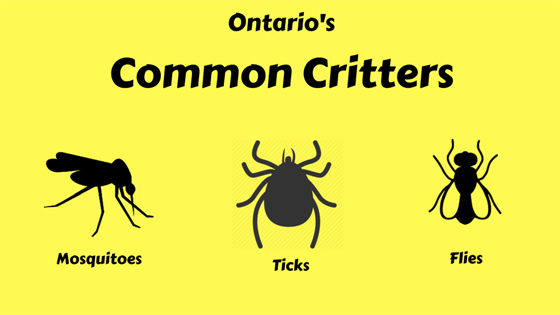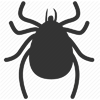
Dr. Jay Keystone says mosquitoes, ticks and flies are three of the most common insects Canadians should look out for this summer. (Graphic: UHN)
For many Canadians, warmer weather means more time outside.
But more time outside means more opportunities to be bitten by insects and other creepy crawlers, whether you're enjoying the sun in the city or at the cottage.
In this three-part series, Dr. Jay Keystone, a physician in the tropical disease unit at Toronto General Hospital, UHN, breaks down how to recognize different bites and what you can do to treat them.
Today, he discusses ticks.
Where to find them: Ticks are found across Ontario, most commonly around the southern border of Lake Ontario.
What are the symptoms: Dr. Keystone says ticks are different than all other insects because we can’t feel it when they bite. The only way to know if you’ve been bitten is to find the tick on your skin.
“Ticks actually inject an anesthetic into the bite site which prevents you from knowing they’re even there,” says Dr. Keystone.
“Mosquitoes can bite and take up blood fairly quickly, but ticks have to remain on the body for a period of time to feed. So they don’t want us to knock them off.”

- Most common along the southern border of Lake Ontario
- Perform tick checks regularly
- Use tweezers to carefully remove ticks, making sure to remove the head
- If you find a tick after 36 hours, you may be at risk for Lyme disease
- Use insect repellent and wear long sleeves to prevent bites
What are the risks: Ticks can carry Lyme disease, which they can transmit through their bites. But not all ticks carry Lyme disease, and Dr. Keystone says if a tick has been on the skin less than 36 hours, you aren’t at risk of contracting the disease.
What you can do: Insect repellants are effective at keeping ticks away. Dr. Keystone also recommends wearing long sleeves and pants when visiting areas where you know there may be ticks, and tucking your pants into your socks.
Dr. Keystone also stresses the importance of tick checks after leaving an area where ticks are common. He recommends checking your whole body, paying particular attention to the hairline, underarms, groin, ankles and behind the knees. He says the tick will look like a small mole.
If you find a tick, carefully remove it using tweezers.
“Do not use your fingers and do not apply anything to the area. You need to grasp the tick right up against the skin, and pull it off in a smooth motion, making sure to remove the tick and its mouth bars,” says Dr. Keystone.
If you find a tick on your skin 36 hours after being exposed, Dr. Keystone says not to panic, but to seek medical attention.
“What we now know is that if you receive a single dose of doxycycline within 72 hours after removal of a tick that has been attached for more than 36 hours, infection can be prevented,” he says.
Public health experts recommend that if ticks are removed they should be placed in a Ziploc bag and sent to the lab for identification.
Want to know more? Revisit parts one and two where Dr. Keystone discusses mosquitoes and flies:

- Found in both urban and rural areas
- Bites cause red, itchy bumps on the skin
- Use insect repellent to prevent bites
- In Ontario some carry West Nile
- If you experience flu-like symptoms see a doctor

- Mostly nuisance
- Watch for flies at the cottage or other rural settings
- Common flies include black-flies, deer-flies, stable-flies and horse flies
- Bites are bigger than mosquitoes' and have a dark centre
- Use ice to relieve particularly swollen or paintfull bites
